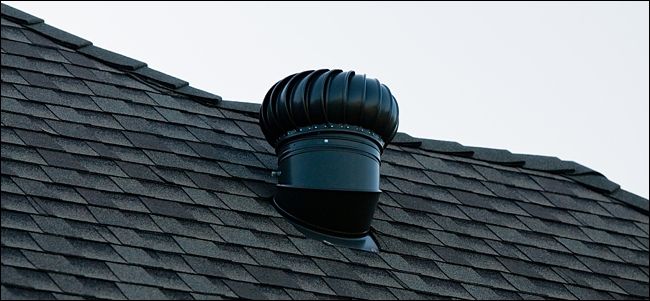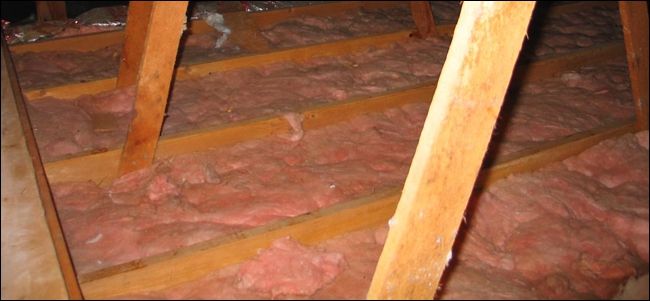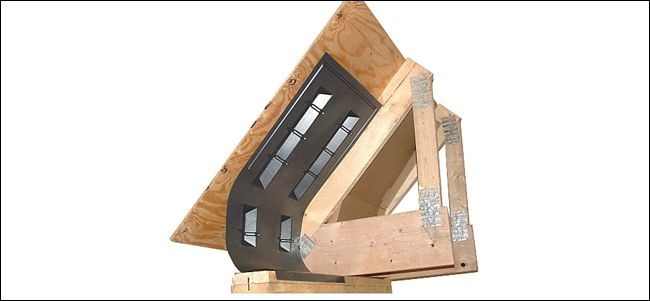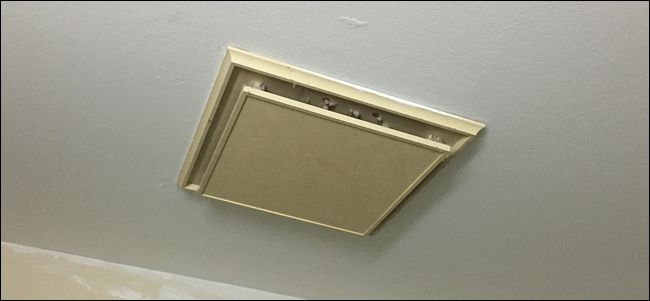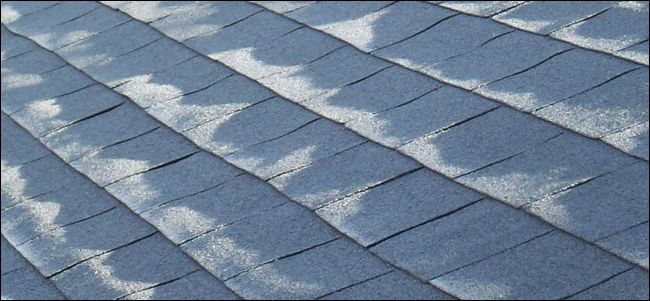Quick Links
Getting a smart thermostat to control the heating and cooling in your house can potentially save you money depending on how you use it, but a thermostat isn't going to save you money all by itself. Your home also needs good airflow and insulation, and the attic is the biggest piece of the puzzle.
Make Sure It Has Proper Ventilation
It might not make much sense, but in order for your house to stay cool during the summer and warm during the winter, the attic needs to have the proper ventilation, so that hot air can easily escape.
Your attic should have some kind of ventilation with both intake vents and exhaust vents--there are different kinds of vents for both. On most houses, you'll usually have soffit vents (a.k.a. eave vents) for intake. Exhaust vents usually consist of ridge vents, gable vents, or general fan-operated vents (like the one pictured above). This ensures that hot air can escape during the summer and cold air can get in during the winter.
Wait, why would you want cold air coming into the attic during winter? Because if the attic is too warm, the water from melted snow will run off, and when it reaches the edge of the roof where it's much colder, it will freeze and form an ice dam. From there, melted snow will puddle up behind the ice dam and possibly leak through the shingles, causing damage to your roof.
However, a cold attic doesn't mean your living space has to be cold. This is why insulation was invented, and it brings us to the next point of order.
Is There Enough Insulation?
Your attic most likely has some form of insulation, but the question is whether or not you have enough of it--or if it's even good insulation in the first place. The heat from your house can easily radiate into your attic, which is why insulation is pretty much a necessity.
Make sure that your attic is completely covered in insulation and that there are no bare spots where you can see the floor of the attic (i.e. the drywall ceiling of the room below). If you see a lot of bare spots, it could mean that your attic doesn't have enough insulation and you might need to add more, or it could also mean insulation is piling up somewhere and you may need to spread it out more.
If you go up into your attic and see that you have insulation all around, you might think you're good to go, but be sure to inspect it to see if it's actually still good. Over time, insulation can get damaged or simply become old. Any insulation that's compressed, moldy, or has water stains on it will need to be replaced. Plus, if you have an older house, your insulation might consist of vermiculite, which could contain asbestos and would need to be professionally discarded and replaced with safer insulation.
There are two types of attic insulation that you'll see in most homes: loose fill (a.k.a. blown-in) insulation and batt (a.k.a. blanket or roll-out) insulation. Batt insulation is great to use if you plan to DIY, but blow-in insulation requires a special machine to blow it around your attic, which usually requires a professional.
Inspect the Baffles
Attic baffles are pieces of plastic or foam that prevent insulation from blocking soffit vents, as well as create a distinct path for air to get into the attic from the outside. Sometimes they can become damaged or just fall off, allowing insulation to break through and cover up vents. Worse yet, some houses don't even have baffles in the first place.
Without proper baffles, air can't flow through the attic, meaning hot air can't escape during the summer and cold air can't get in during the winter, which can cause all sorts of problems year round.
Make Sure Bathroom Fans Ventilate Properly
If you have a half-bathroom with just a sink and toilet, ventilating the bathroom fan straight into the attic isn't really a problem, but bathrooms with tubs and showers where it can get really humid should be ventilated straight to the outside, and not into the attic. If you were to vent it straight into the attic, all that humid air would fill up the attic and cause mold to grow, especially around the spot where the vent hole is.
Instead, it's a good idea to bypass the attic and vent it straight outside. You can get insulated flexible ducts to reroute the ventilation if needed--the insulation prevents condensation from forming, which could then cause mold growth.
Check for Roof Leaks
It's likely that you rarely take a visit into your attic--maybe a couple times per year, which is why you really don't want leaks in your roof. By the time you do discover them, there's probably mold growing from the moisture and possible damage that could require fixing.
This is why it's always a good idea to check your rook for leaks whenever you do go into the attic, even if that's not the main reason you're heading up there--it's always best to catch a leak early so that it doesn't cause more damage later on.
Furthermore, check your roof for damaged or missing shingles, which are the main causes for most roof leaks. If you don't feel comfortable getting onto your roof, call a capable friend who can do it for you, or hire a professional.
In the end, if you want your house to be in tip-top shape and have the energy efficiency necessary to save money on your heating and cooling, then the attic is one of the most important factors to focus on. Many homeowners often forget about the attic, since it's one of the most least-visited places in your entire house, but it's also one of the most important.
Image Credits: ToddonFlickr/Flickr, tammykayphoto/Bigstock, Ryan McFarland/Flickr, Alisha Vergas/Flickr, Home Depot


